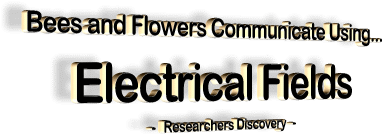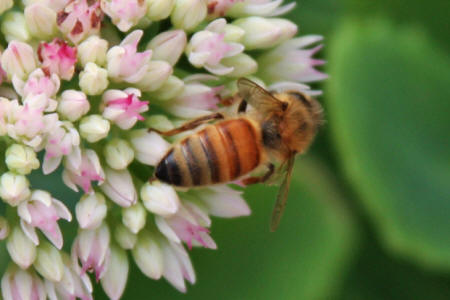|
from
PHYS Website
Flowers' methods of communicating are at least as sophisticated as any devised by an advertising agency, according to a new study, published today in Science Express by researchers from the University of Bristol.
The research shows for the first
time that pollinators such as bumblebees are able to find and
distinguish electric signals given out by flowers. However, for
any advert to be successful, it has to reach, and be perceived
by, its target audience. Flowers often produce bright colors, patterns and enticing fragrance to attract their pollinators.
Researchers at Bristol's School of Biological Sciences, led by Professor Daniel Robert, found that flowers also have their equivalent of a neon sign - patterns of electrical signals that can communicate information to the insect pollinator.
These electrical signals can work in concert with the flower's other attractive signals and enhance flower power, or floral advertising power.
Plants are usually charged negatively and emit weak electric fields. On their side, bees acquire a positive charge, up to 200 Volts, as they fly through the air.
No spark is produced as a charged bee approaches a charged flower, but certainly a small electric force builds up that can potentially convey information. Placing electrodes in the stems of Petunias, the researchers showed that when a bee lands, the flower's potential changes and remains so for several minutes.
Could this be a way by which flowers tell bees another bee has recently been visiting?
To their surprise, the researchers discovered that bumblebees can detect and distinguish between different floral electric fields. Also, when bees are given a learning test, they are faster at learning the difference between two colors when electric signals are also available. How then do bees detect electric fields?
This is not yet known, although the researchers speculate that hairy bumblebees bristle up under the electrostatic force, just like one's hair in front of an old television screen.
Bumblebees and flowers have an electric relationship
The discovery of such electric detection has opened up a whole new understanding of insect perception and flower communication.
Dr. Heather Whitney, a co-author of the study commented:
Professor Robert said:
|

